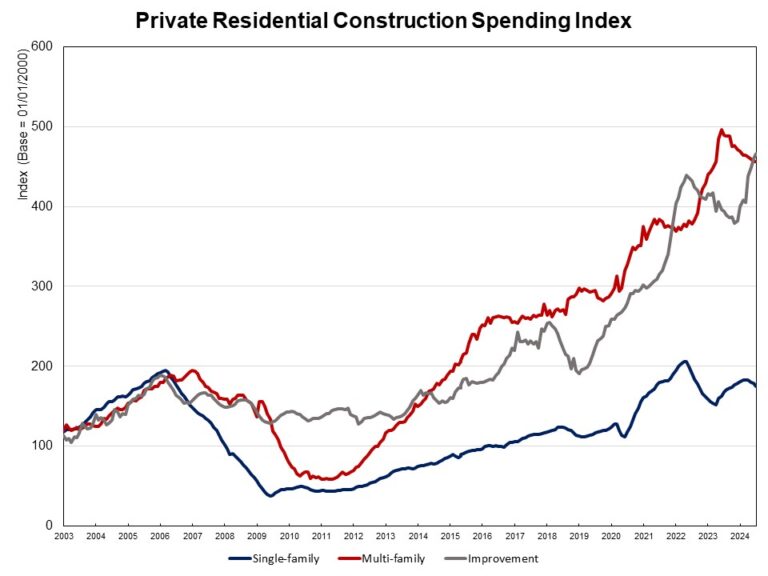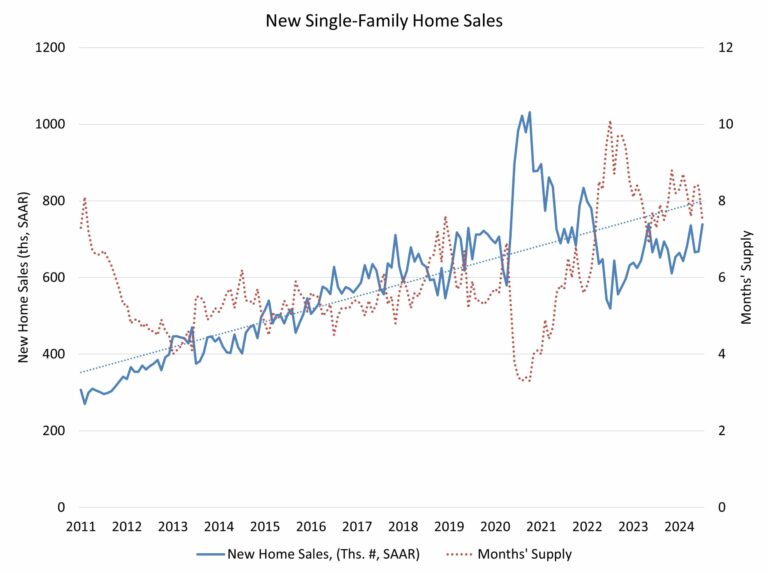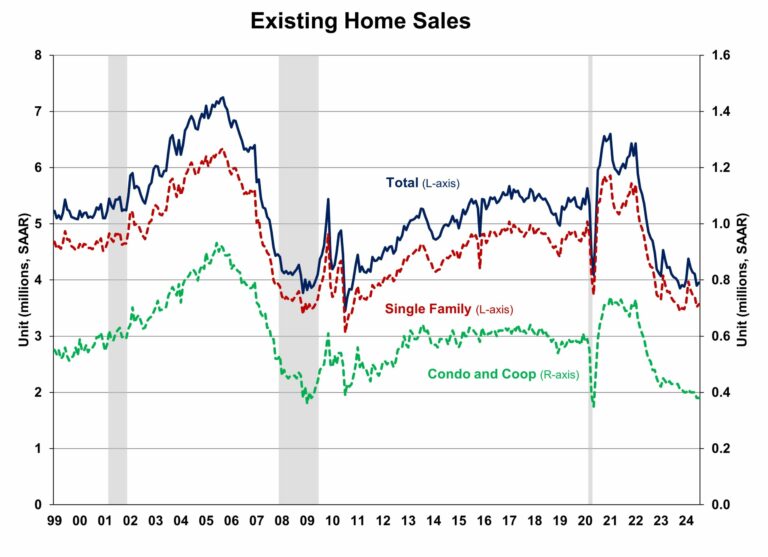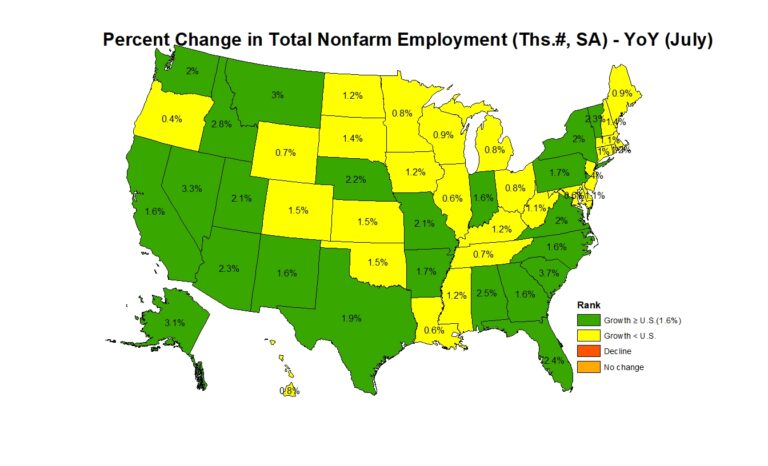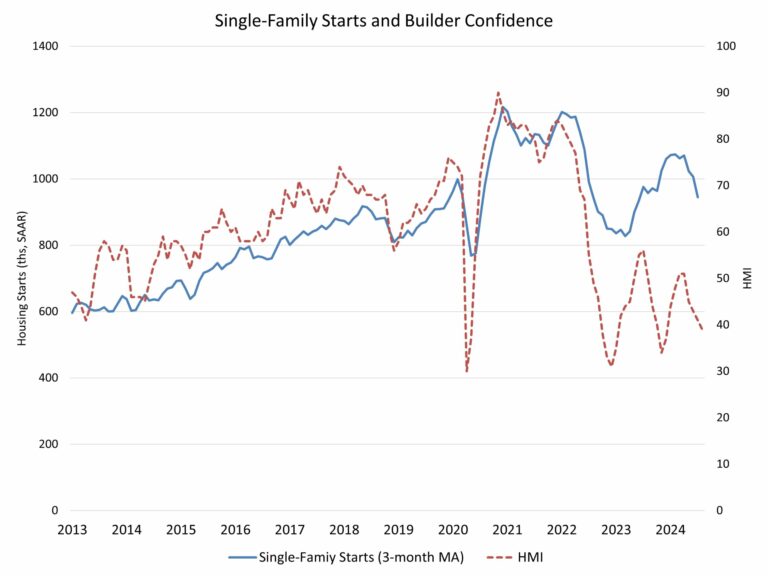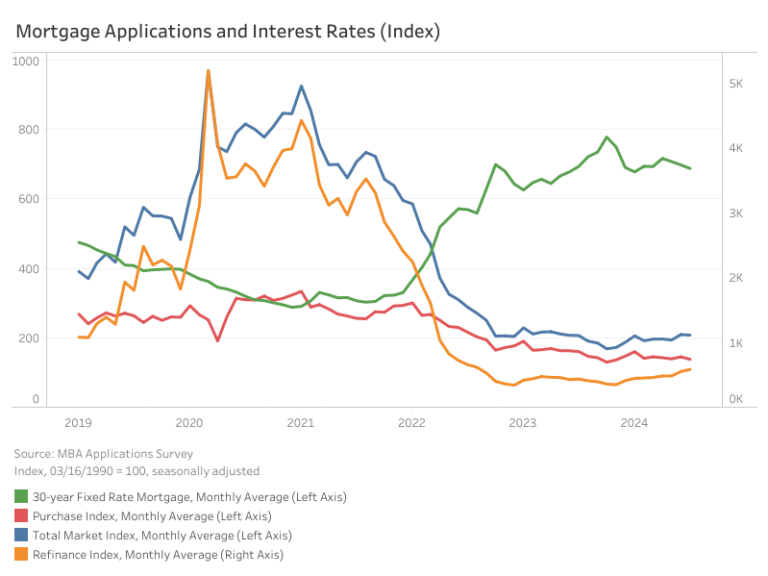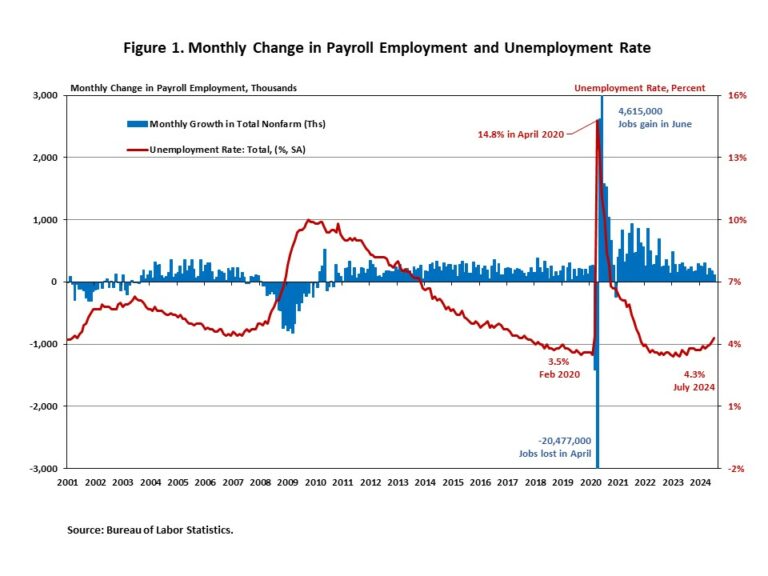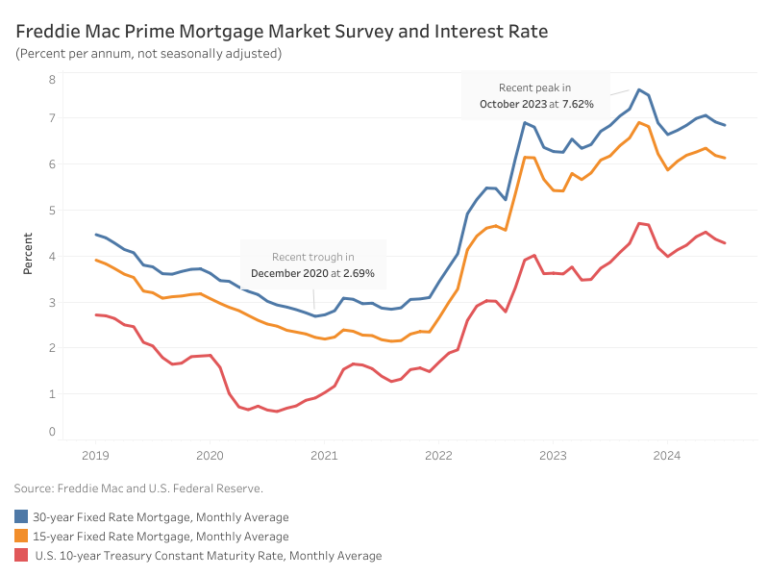Over the first seven months of 2024, the total number of single-family permits issued year-to-date (YTD) nationwide reached 599,308. On a year-over-year (YoY) basis, this is an increase of 13.7% over the July 2023 level of 527,158.
Year-to-date ending in July, single-family permits were up in all four regions. The range of permit increases spanned 18.2% in the West to 9.8% in the Northeast. The Midwest was up by 14.5% and the South was up by 12.4% in single-family permits during this time. For multifamily permits, three out of the four regions posted declines. The Northeast, driven by New York was the only region to post an increase and was up by 32.0%. Meanwhile, the West posted a decline of 31.2%, the South declined by 22.7%, and the Midwest declined by 9.3%.
Between July 2024 YTD and July 2023 YTD, 47 states and the District of Columbia posted an increase in single-family permits. The range of increases spanned 39.4% in Arizona to 2.1% in Rhode Island. New Hampshire (-0.2%), Hawaii (-2.7%), and Alaska (-10.4%) reported declines in single-family permits. The ten states issuing the highest number of single-family permits combined accounted for 64.0% of the total single-family permits issued. Texas, the state with the highest number of single-family permits, issued 97,551 permits over the first seven months of 2024, which is an increase of 15.6% compared to the same period last year. The succeeding highest state, Florida, was up by 9.5%, while the third highest, North Carolina, posted an increase of 11.8%.
Year-to-date ending in July, the total number of multifamily permits issued nationwide reached 279,618. This is 17.2% below the July 2023 level of 337,730.
Between July 2024 YTD and July 2023 YTD, 18 states recorded growth in multifamily permits, while 32 states and the District of Columbia recorded a decline. New York (+117.4%) led the way with a sharp rise in multifamily permits from 10,110 to 21,981, while the District of Columbia had the biggest decline of 68.7% from 1,969 to 616. The ten states issuing the highest number of multifamily permits combined accounted for 64.7% of the multifamily permits issued. Over the first seven months of 2024, Texas, the state with the highest number of multifamily permits issued, experienced a decline of 30.4%. Following closely, the second-highest state in multifamily permits, Florida, saw a decline of 24.4%. California, the third largest multifamily issuing state, decreased by 27.5%.
At the local level, below are the top ten metro areas that issued the highest number of single-family permits.
For multifamily permits, below are the top ten local areas that issued the highest number of permits.
Discover more from Eye On Housing
Subscribe to get the latest posts sent to your email.
This article was originally published by a eyeonhousing.org . Read the Original article here. .

